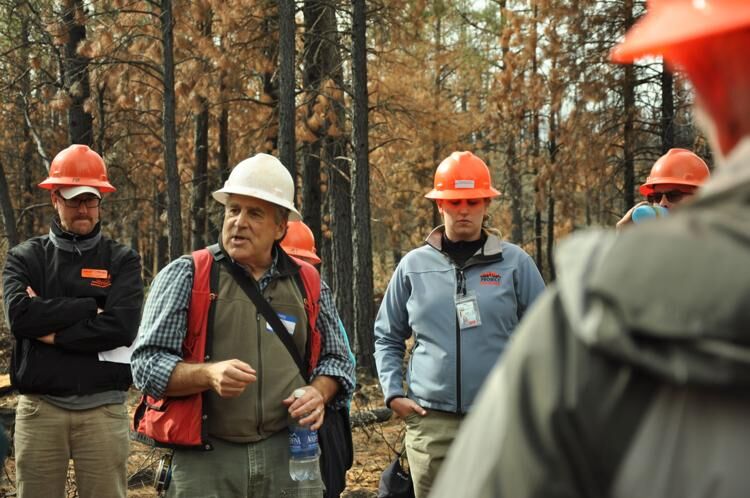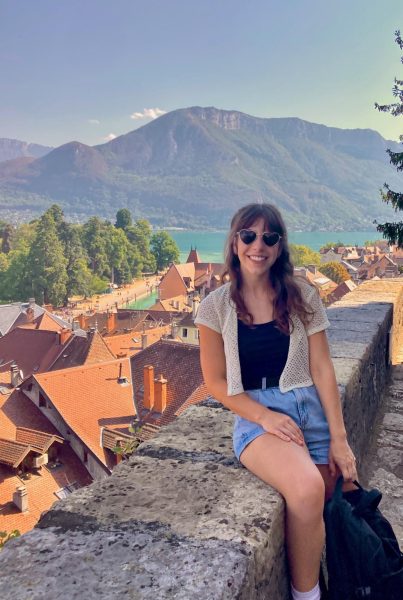Castles: Preparedness is key to an early wildfire season
July 6, 2021
Editor’s Note: This column does not represent the opinion of The Daily Barometer. This column reflects the personal opinions of the writer.
Around Labor Day of 2020, Oregonians began to wake up in an apocalypse. The sky was the color of a dystopian novel, and people were forced to stay inside or risk choking on noxious gases.
This yellow filter experience was coming from the smoke of wildfires that were stampeding through Oregon. Many people were forced to evacuate their homes, and many more were ready to leave at a moment’s notice.
Now at only the beginning of the 2021 fire season, new record-high temperatures keep being broken. The Willamette Valley has been seeing three-digit days including in Corvallis, Ore.
So Oregonians are wondering, will the fires this year be just as devastating?
The short answer: possibly.
Larry O’Neill, state climatologist and associate professor for the College of Earth, Ocean, and Atmospheric Sciences at Oregon State University, said “We can’t say for sure that this will be a terrible fire season, but what we can say is that the risk of it being a bad fire season is high.”
Ignition is notoriously unpredictable and can be inconspicuous until it is a much bigger problem. “[An ember] can lay kind of dormant for weeks at a time and then out of nowhere it can spark up into a major wildfire,” O’Neill said.
However, there are factors that lead to the severity of fires that we can examine.
The hot temperatures are pretty obvious to look at. Plants lose their moisture making it easier for fires to ignite and spread. What you might think about less is the lack of precipitation we have had leading up to summer.
The ground holds a surprising amount of water which then can be used by plants. So less rainfall means less moisture even when the rain has long since passed.
Additionally, as winter sports athletes have noticed as well, there has hardly been any snow or ice accumulation during what are supposed to be very wet months. The absence of snowmelt is then also a contributor to the current statewide drought.
Last year’s drought even helped us start off even dryer this year than the year before.
One issue that we did not face last year to the extent we are facing this year is thunderstorms. “Part of it is due to the warmer weather—we’re having a lot more thunderstorms… and those are starting a lot of fires,” O’Neill said.
Lightning strikes are great at starting fires. Even if we know where a storm is occurring, the specific location of fire-sparking strikes is an unknown, and it can be weeks before a leftover ember sparks a fire.
However, there are certain factors that are within our control.
Forest management is a big part of prevention. Practices such as prescribed burns that help remove hazardous debris and selective timber harvesting can make forests more resilient.
We can also improve our technology in relation to forecasting weather and understanding fire behavior better.
To younger folks such as myself, these fires have seemed quite normal since their occurrence has been this frequent as of growing up. But to older adults who have lived longer in Oregon, this is not normal.
Of course, this is because of climate change. More extreme weather creates more extreme disasters, and it is still only getting warmer and dryer.
All of these factors may point to calamity, but the truth is, we cannot know what will happen until it happens. Just like the weather forecast, we can only predict so far out with so much accuracy.
In the case, however, that we see wildfires engulf Oregon again, should Corvallis residents be worried?
Corvallis Fire Chief Kenneth McCarthy reminds us “There is nothing here [in Corvallis rural areas] that makes us fireproof and [immune from the type of fires that burned last year in other areas.”
All places and times are unique in their level of fire danger, but until a fire is present, there is not much that can tell us how worried we should be.
Similar to O’Neill, McCarthy said “There is so much to fire season that you can’t really say this is what a fire season expectation is.” This is in regards to predicting how bad a fire season will be at the beginning of the fire season, weather, wind, location of fires—all of which play a part into how large wildfires will become.
As for fires that begin in the city, McCarthy said that fires are often more frequent in the winter when a lot more power is being drawn in a mess of cords and chimneys are being used to keep homes warm, so the actual numbers show typically a slightly higher percentage of house fires in the city areas in the winter than in the summer.
The good news is that there are ways to protect yourself and your home with preparedness being key.
Small things such as keeping tree needles and other debris out of gutters and keeping any woodpiles away from your home can go a long way. For more ideas, you can also go to sites such as Firewise, the Oregon Department of Forestry, or look up Wildland Fire Preparedness.
Every year as the wildfire season approaches, “We have wildland refresher trainer for all our firefighters” according to McCarthy. So making sure your home is as safe as can be every year is also a fine idea.
While we cannot know what fire season will look like in advance, we do know that wildfires are becoming more and more disastrous. We are going to have to improve our prevention and readiness to inhibit the same loss of life and livelihood we saw in 2020.






















































































































